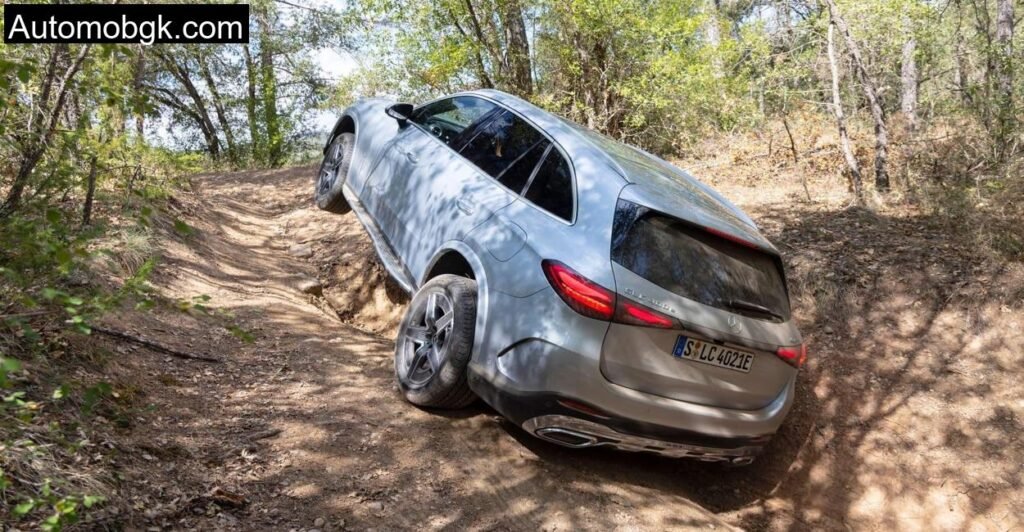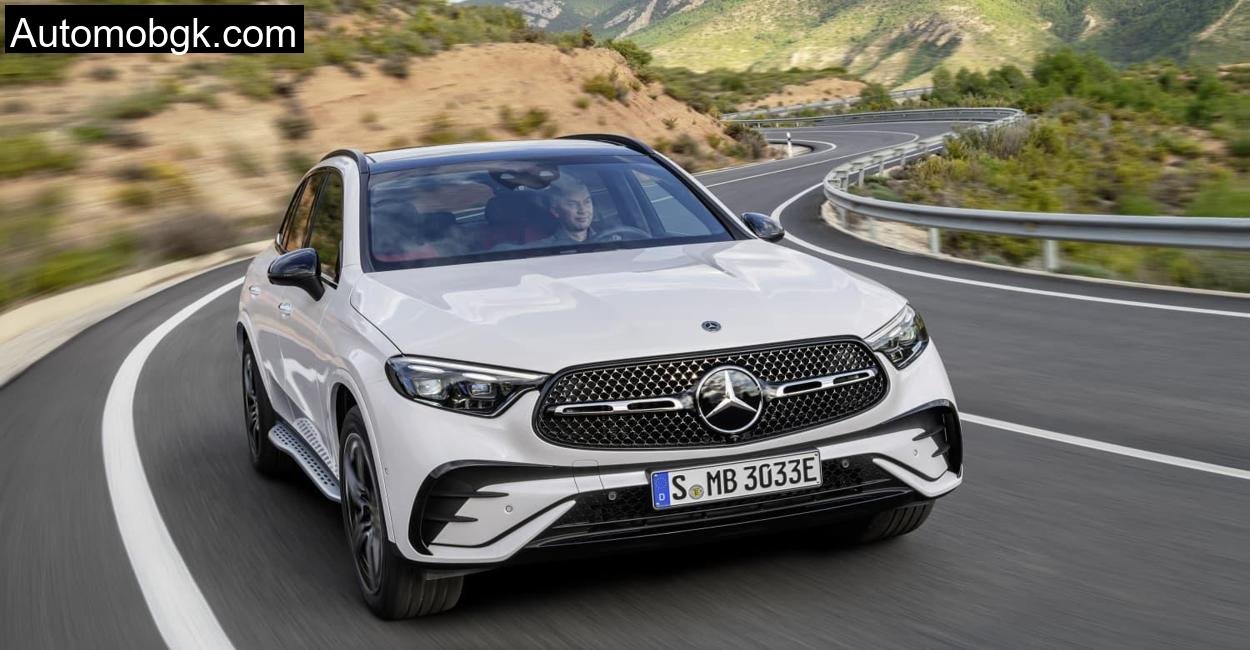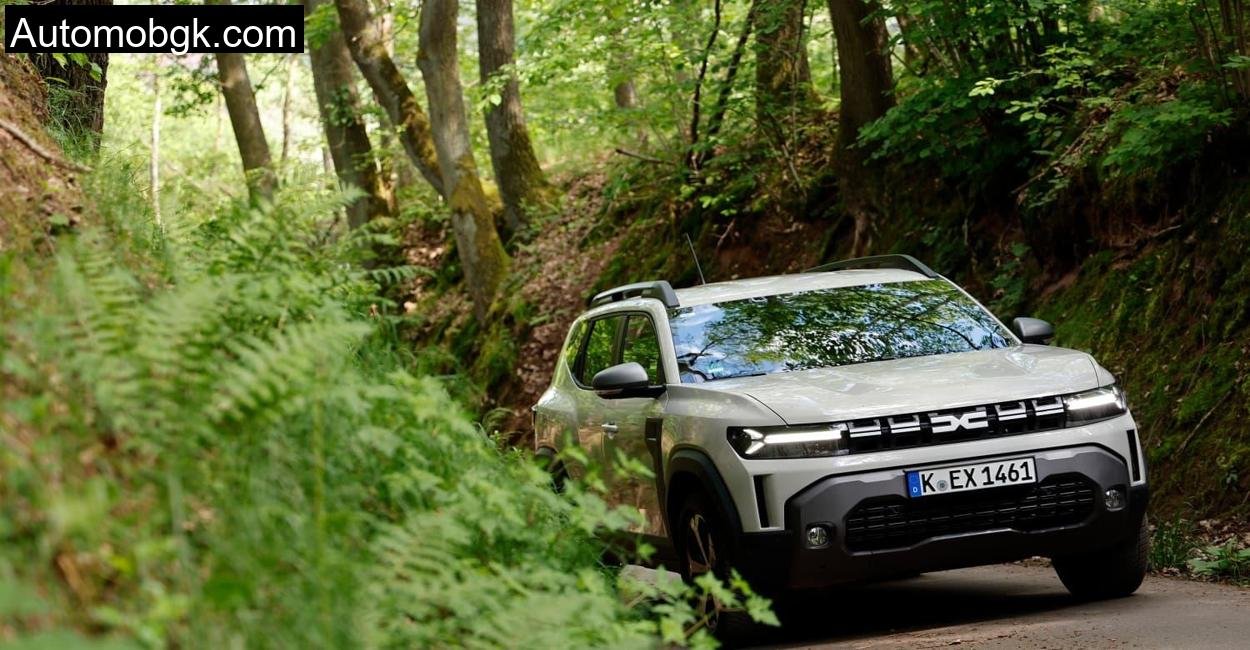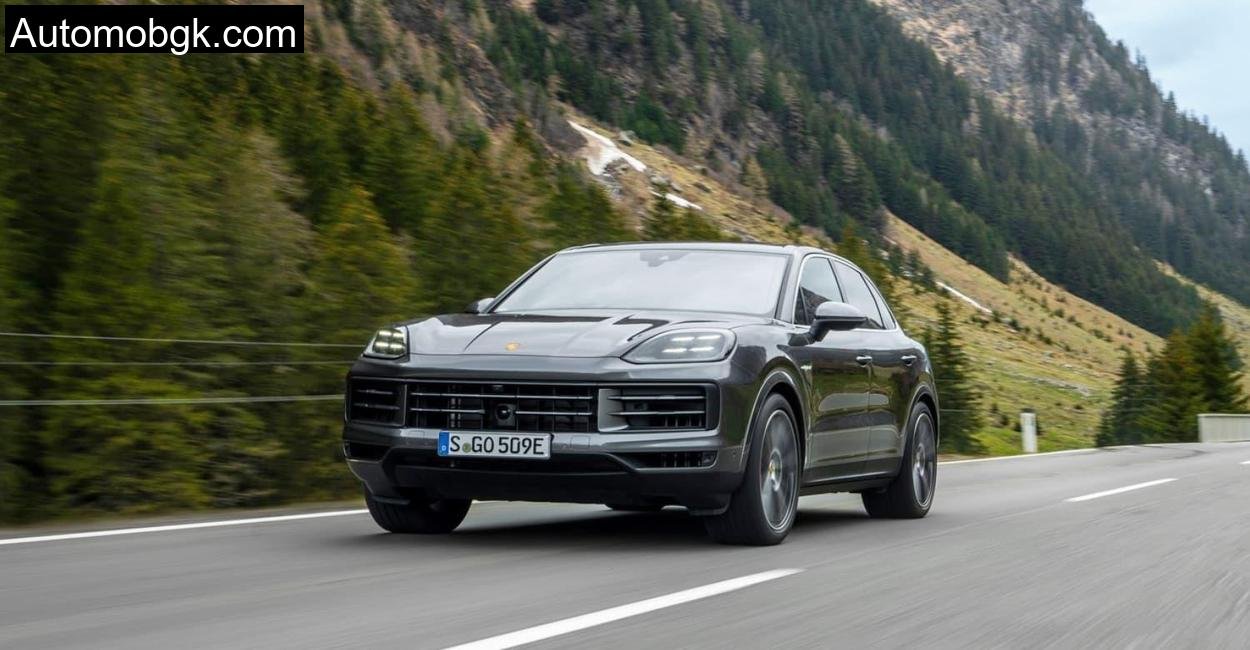With an E-license plate and a full charge, I set off into the undulating terrain of Stromberg, a region that demands everything from a car: steep climbs, tight hairpins, long stretches of forest road, and unpredictable rural traffic. And the GLC was ready to show what this diesel-electric duo was capable of.
A Diesel as a Plug-in Hybrid
Plug-in hybrids are not new, but the idea of combining a torquey diesel with an electric motor is rare, and frankly, brilliant. The GLC 300de features a 2.0-liter four-cylinder turbodiesel churning out 197 hp, paired with a 136 hp electric motor. The result? A combined output of 333 hp and a staggering 750 Nm of torque.
From a standstill, the propulsion is immediate. The electric motor bridges the traditional turbo lag beautifully, catapulting the nearly 2.4-ton SUV with more urgency than I expected. Merging onto the B41 highway felt effortless, the torque pulling strong from 60 to 100 km/h in just 3.5 seconds. Overtakes were swift, especially with the diesel and electric duo pushing hard together.
What struck me was the four-mode drive system: Electric, Hybrid, Sport, and Battery Hold. In “Electric,” I glided silently through the cobbled town center of Stromberg, no diesel grumble to disturb the morning calm. Switch to “Sport,” and the character flipped. The diesel came alive with vigor, while the electric motor acted like an aggressive booster, adding muscle to every input.
Measured Values of the 300de Plug-in Hybrid
Over several days, I logged highway stretches, village roads, and offbeat trails. In Stromberg’s steep vineyards, I managed over 100 km in full electric mode, nearly matching the 119 km claimed by Mercedes. Fuel consumption once the battery depleted hovered around 6.5 liters per 100 km overall.
City roads returned a modest 6.2 liters, while rural segments dipped to 6.0. On the Autobahn? A rather thirsty 7.6 l/100 km, but understandable for an SUV lugging a heavy battery.
Electric consumption came in at 25.9 kWh/100 km,not lean, but expected considering the car’s size. The GLC scored 3 out of 5 stars on the Ecotest, a testament to its decent balance of performance and efficiency.
Lots of Space, Good Usability

Inside, the GLC feels like a living room that can move. Front and rear seats are generous in space and comfort. I’m 6’2” and never once felt cramped.
However, the plug-in system takes its toll on luggage space. The trunk holds 330 liters, which is 40 liters less than non-hybrid GLCs. Still, I managed to fit two duffel bags, a camera kit, and my drone backpack.
Fold the rear seats, and you unlock 1,345 liters, plenty for a weekend getaway. Mercedes’ new LCD display setup is slick, intuitive, but sometimes frustrating. A few tactile buttons would have improved usability, especially when navigating menus while driving. Thankfully, “Hey Mercedes” voice control works seamlessly.
360-Degree View of the Interior
Take a moment to look around, and you realize that the cabin is crafted for both comfort and technology. The digital instrument cluster is crisp and customizable. The central screen is slightly angled toward the driver, offering Apple CarPlay, Android Auto (both wireless), navigation, and a Wi-Fi hotspot.
The ambient lighting offers 64 color variations, more style than function, but visually appealing at night. The GLC recognizes trailer types and axle loads and adjusts its recommended routes. That’s not a gimmick; that’s smart engineering.
Mercedes also provides seven years of free real-time traffic updates and navigation system upgrades. That’s how you build long-term loyalty.
Suspension and Handling
The air suspension option fitted to my test model handled Stromberg’s pockmarked backroads like a champ. Bumps and dips were absorbed gracefully. In Comfort mode, the GLC floated smoothly; in Sport mode, it firmed up noticeably but not harshly.
The all-wheel drive and adaptive dampers work in sync to keep body roll in check. The rear-wheel steering (optional) makes tight corners less stressful, particularly when weaving through Stromberg’s narrow village lanes.
I tested the evasive maneuver, and the GLC remained planted and composed. That’s impressive for something this size.
Safety of the Mercedes GLC
Standard safety includes Active Brake Assist with emergency braking and pedestrian detection. Optional Driver Assistance adds adaptive cruise control, lane keep assist, and intersection detection.
In Euro NCAP crash testing, the GLC scored 92 percent and a full five stars. That’s confidence on wheels.
The GLC Off-Road

It might look urbane, but don’t underestimate it. Stromberg’s forest roads and vineyard slopes offered a testbed for traction and ground clearance. The 360-degree “Transparent Hood” camera feature is a game changer. It digitally reveals the terrain beneath the front wheels at low speeds.
Electric torque, instantly available, gave me precision when crawling over jagged rocks and tight switchbacks. You don’t feel like you’re driving a luxury SUV off-road. You feel like you’re in control of a machine that can do more than just school runs.
Test Drive in the Mercedes GLC Coupé
If you want the GLC but with more style, the Coupé is for you. Its rear design is sleeker, and while it sacrifices some headroom and practicality, it gains presence.
I drove the Coupé along the Stromberg ridgeline, the panoramic glass roof, the sunlight filtering through winter clouds, and the responsive powertrain made it a soulful experience.
Legroom remains generous, though tall passengers may feel the pinch in headroom. The boot is larger than before, holding 545 to 1490 liters, but the sloped tailgate limits vertical loading.
Technical Specification
| Specification | Mercedes GLC 300de Plug-in Hybrid |
| Engine | 2.0L 4-cylinder turbodiesel |
| Electric Motor | 136 hp (100 kW) |
| Combined Power Output | 333 hp |
| Torque | 750 Nm |
| Transmission | 9G-TRONIC Automatic |
| Drivetrain | All-Wheel Drive (4MATIC) |
| Battery Capacity | 31.2 kWh (usable) |
| Electric Range (WLTP) | 119 km |
| Real-world Electric Range | ~110 km |
| Fuel Consumption (Hybrid) | 6.5 l/100 km |
| CO2 Emissions | 17 g/km |
| Acceleration (0-100 km/h) | 6.4 seconds |
| Top Speed (Electric) | 140 km/h |
| Top Speed (Combined) | ~220 km/h |
| Towing Capacity | 2,500 kg |
Conclusion
The Mercedes GLC 300de isn’t just a smart plug-in hybrid. It’s a statement: that diesel still has a place in a cleaner future when paired wisely with electric tech. In Stromberg, it tackled city streets, rough forest trails, and fast highways with equal finesse. It’s not perfect,the trunk is compromised, and the infotainment can frustrate, but as a luxury hybrid SUV, it sets a new benchmark.
At over €84,000, it’s not cheap. But if you value long-range efficiency, off-road ability, and daily usability wrapped in a plush package, the GLC 300de might just be the rare, intelligent blend you’re looking for.
How long does it take to charge the GLC 300de?
Using a standard wall box, it takes about 3.5 hours to fully charge the 31.2 kWh battery. On a fast AC charger (11 kW), it’s slightly quicker.
Can I drive the GLC 300de in winter on electric power only?
Yes, even in colder temperatures, the electric range holds well due to the battery’s thermal management. However, expect a range drop of 10-15% in freezing conditions.
Is the diesel engine in the GLC 300 noisy?
Not really. Inside the cabin, sound insulation is excellent. The diesel hum is noticeable only under heavy acceleration, otherwise it’s whisper-quiet.







